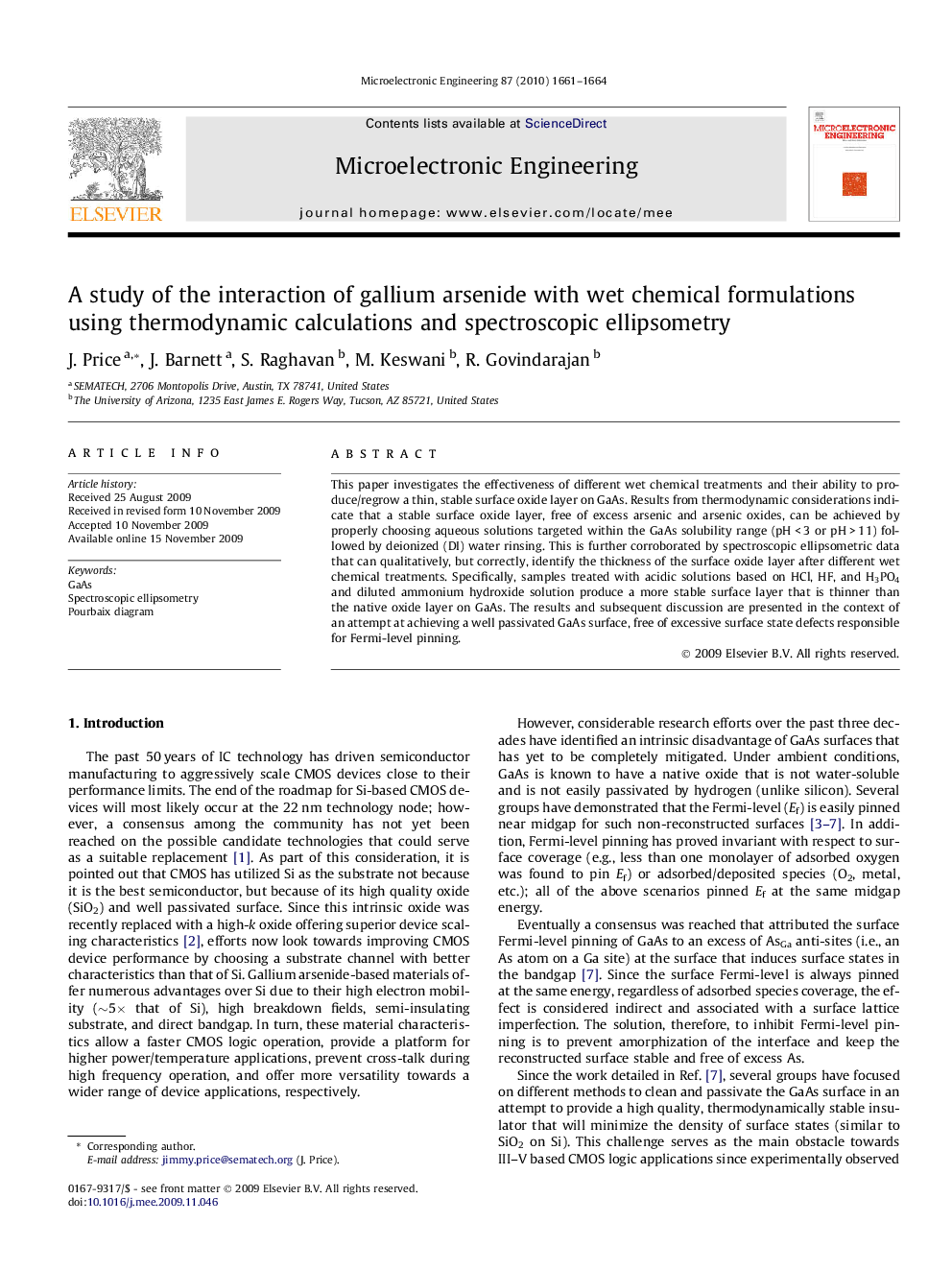| Article ID | Journal | Published Year | Pages | File Type |
|---|---|---|---|---|
| 544799 | Microelectronic Engineering | 2010 | 4 Pages |
This paper investigates the effectiveness of different wet chemical treatments and their ability to produce/regrow a thin, stable surface oxide layer on GaAs. Results from thermodynamic considerations indicate that a stable surface oxide layer, free of excess arsenic and arsenic oxides, can be achieved by properly choosing aqueous solutions targeted within the GaAs solubility range (pH < 3 or pH > 11) followed by deionized (DI) water rinsing. This is further corroborated by spectroscopic ellipsometric data that can qualitatively, but correctly, identify the thickness of the surface oxide layer after different wet chemical treatments. Specifically, samples treated with acidic solutions based on HCl, HF, and H3PO4 and diluted ammonium hydroxide solution produce a more stable surface layer that is thinner than the native oxide layer on GaAs. The results and subsequent discussion are presented in the context of an attempt at achieving a well passivated GaAs surface, free of excessive surface state defects responsible for Fermi-level pinning.
